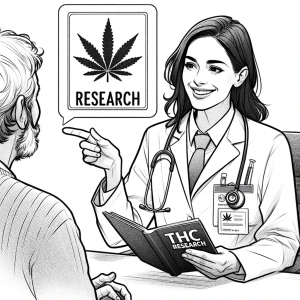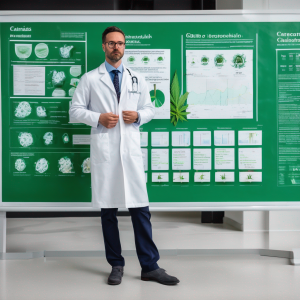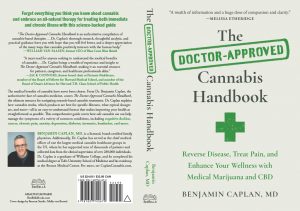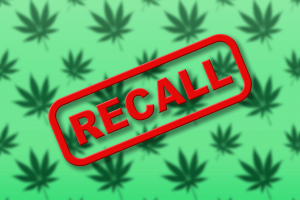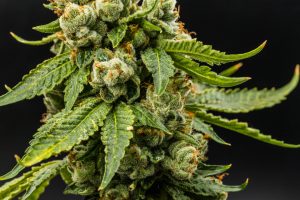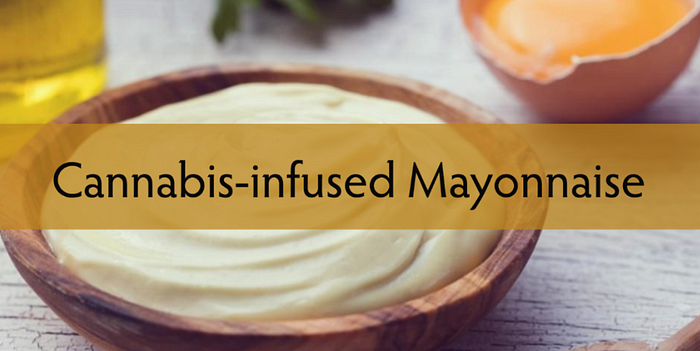Medicinal cannabis is changing the face of clinical medicine. We are the leaders of that change.


















































































At CED Clinic, we aim to create a welcoming and professional environment in which patients and clinicians can openly discuss the benefits of medical cannabis.
Our Services
- Massachusetts Medical Card Certifications
- Adult Cannabis Care
- Pediatric Cannabis Care
- In-Depth Consultations & Care Plans
- Concierge Care
- EO Care
- Medical Second Opinions
- Talk Therapy
Our Mission
- To Heal
- To Educate
- To Listen
Our Team
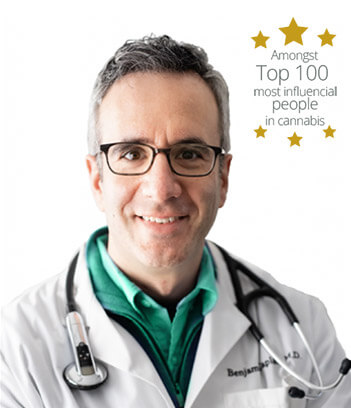

Benjamin Caplan, MD, stands at the forefront of medical cannabis care as the Founder and Chief Medical Officer of CED Clinic and CED Foundation. His entrepreneurial journey further extends as the Founder of multiple medical cannabis technology and educational platforms and as a medical advisor to the prestigious cannabis investment fund, GreenAXS Capital. Within digital healthcare, Dr. Caplan co-founded EO Care, Inc, a pioneering digital therapeutic and telemedicine platform, offering personalized cannabis care and product plans and continuous clinical guidance to a global clientele seeking a reliable, evidence-based cannabis care partner. Adding to his repertoire of contributions to the medical cannabis arena, Dr. Caplan has recently published “The Doctor-Approved Cannabis Handbook,” an industry-first resource empowering readers with the full scope of the therapeutic potential of cannabis. Through his multifaceted involvement, Dr. Caplan continuously strives to bridge the gap between traditional medicine and cannabis care, making a significant impact in evolving holistic healthcare.
Erin Caplan, NP is a board-certified Pediatric Nurse Practitioner with a master’s-level medical education from Simmons. Her extensive clinical journey has been enriched through roles at Massachusetts General Hospital, Hyde Park Pediatrics, and Dana-Farber Cancer Institute, where she has provided both inpatient and outpatient primary care to some of the most fragile and challenging pediatric patients. A registered cannabis care provider licensed by the Massachusetts Cannabis Control Commission, Erin seamlessly blends her pediatric expertise with the nuance and adaptability required for personalized cannabis care. A community leader, avid athlete, and dedicated mother of four, Erin’s compassionate bedside manner and steadfast commitment to evidence-based practice have earned her the trust and appreciation of patients and families, showcasing her as a harmonious blend of clinical excellence with a personal touch.
Patient Stories
Genuine care and great medical advice
Dr. Caplan’s genuine care and commitment are evident in every interaction. At CED Clinic, I received more than just medical advice; I gained a trusted advisor in my health journey. His use of personalized treatment plans and educational resources helped me understand and manage my condition better than ever before.
– Michael T.
Awesome experience!
I never felt like just another patient at CED Clinic; Dr. Caplan made sure of that. His thorough understanding of my health needs, paired with his deep knowledge of cannabis therapy, provided a tailored experience that truly catered to my well-being. Every visit felt like a step forward in my journey dealing with sleeplessness, stress, and PTSD.
– Denise H.
Happy customer!
My visit to CED Clinic was absolutely amazing, and it all started with Kim. She was so friendly and helpful right from the get-go, making the whole scheduling thing a breeze – a real breath of fresh air! Then there was Dr. Caplan. Honestly, chatting with him felt more like catching up with an old friend than a typical doctor’s visit. He didn’t seem to be watching the clock at all; he was all in, really getting to grips with what I’ve been going through, and dishing out advice that hit the nail on the head. And get this – he’s even written a book about it all! I can’t wait to get my hands on a copy. The whole experience at CED Clinic was just so warm and genuine. They’ve got something special going on over there, for sure.
I’m Free: My Journey Beyond Chronic Pain!
I felt trapped in a cycle of chronic pain, where prescription and over-the-counter meds were just dead ends. Then I found Dr. Caplan. His blend of medical expertise and cannabis knowledge opened a door I didn’t know existed. I read ‘The Doctor-Approved Cannabis Handbook’ and it was/is a turning point—packed with research and actionable advice, it guided me to a pain management plan that actually worked. Thanks to Dr. Caplan, I’m living with less pain and more hope. Highly recommend for anyone stuck in the pain cycle.
From Frayed Edges to Balance: Found My Center with Cannabis
Let me paint you a picture of my life not too long ago: a job that never hit ‘pause,’ kids that always needed me in a hundred different ways, and a level of work stress that had me teetering on the edge. I was juggling more plates than I had hands for, and it felt like I was one strong breeze away from watching them all come crashing down. Sleep was a luxury I couldn’t afford, and ‘me time’ was a concept so foreign it might as well have been from another planet.
Enter Dr. Benjamin Caplan and his life-altering approach to managing stress through cannabis medicine. At first, I was skeptical—could this really be the answer I’d been searching for? But from the moment we began, it was clear Dr. Caplan wasn’t just any doctor. His blend of traditional medical insight and innovative cannabis expertise was like a breath of fresh air.
What truly transformed my journey, though, was diving into ‘The Doctor-Approved Cannabis Handbook.’ This wasn’t just another self-help book; it was a treasure trove of evidence-based research, clinical wisdom, and, most importantly, actionable advice that felt like it was written just for me. It became my North Star, guiding me through the haze of stress and sleepless nights to a place of understanding and balance.
Thanks to the personalized strategy Dr. Caplan crafted with me, I’ve been able to reclaim control over my stress and find a sense of equilibrium I didn’t think was possible. My work no longer feels like a constant battle, and I’ve found more joy and presence in the time I spend with my kids. The difference is night and day.
I’m beyond grateful to Dr. Caplan and the invaluable lessons from his handbook. For anyone feeling overwhelmed by the demands of work, family, and everything in between, Dr. Caplan’s compassionate, evidence-based approach might just be the lifeline you need. I can’t recommend him enough.
My Journey to Conquering Chronic Insomnia with Dr. Caplan and Cannabis Medicine
I’ve been in this battle with chronic insomnia for what feels like forever. I hit a point where I felt completely out of options. I mean, you name it, I tried it—all those over-the-counter fixes, prescriptions from my doctors, and I even got creative mixing up my own cannabinoid solutions. But nothing worked. Those endless nights of tossing and turning weren’t just annoying; they were wrecking my health and my spirits.
Then, almost out of nowhere, I stumbled upon Dr. Benjamin Caplan and his work in the world of cannabis medicine. From the moment we started talking, I knew this was different. He’s got this unique blend of traditional medical wisdom and cutting-edge cannabis knowledge. It’s like he sees the whole picture in a way no one else had shown me before.
But here’s the real game-changer: “The Doctor-Approved Cannabis Handbook.” That book blew my mind. It’s packed with solid science and real-deal clinical insights on how cannabis can tackle not just insomnia but a whole list of issues. More than that, it gave me straightforward, practical steps tailored just for me. It turned into my guide on this journey to use cannabis safely and super effectively.
I owe so much to Dr. Caplan and the wisdom packed into that book. I’ve finally found some peace from my insomnia—a relief I thought was off the table for me. My sleep’s way better, and my days? They’ve transformed. I can’t thank Dr. Caplan enough. And seriously, if you’re hitting a wall with insomnia or any health problem that just won’t budge with the usual treatments, Dr. Caplan’s approach could be the breakthrough you’re looking for. Certainly was for me.
Used as a Human Target as a Kid, Medical Cannabis is the answer.
I’m totally blind. I live in a rural area. So when I was 12, same-age peers thought zapping the blind girl’s eyes with laser pointers would be a great idea. It got bad enough that my paraprofessional had to have the devices banned from the school for my safety. Shortly after, I began having intense eye aches. I differentiate them from headaches because even a 12 year old can tell the difference. Doctors told my parents and I they were migraines. It wasn’t until later in life that I began realizing there was something else going on here. Really studying migraines, studying the eye, studying neurology and understanding not all was as it seemed. I began developing my own theories as to what these “migraines” were. I take migraine meds, but they don’t treat the eye aches. They treat the other migraine symptoms just fine. My younger brother suggested I try edibles last year. Because by this point, I was in enough pain where I believed I’d have to have my eyes removed. None of us wanted to see that happen. So he took me to a dispensary, (he had spoken with someone he knew there about me prior, and they’d come up with a regimen they thought would work.) The first clue I had that we were on the right track, was that I slept for 14 hours. So I kept a calendar and a spreadsheet full of virtual sticky notes, and 2 weeks later came to Dr. Caplan for my medical card, crazy theories about optic neuropathy in underdeveloped optic nerves and all. A year later, I’m studying cybersecurity, because that’s something I found I’m passionate about, and I can do it now!
To sleep well again is life-changing
Dr. Caplan was coincidentally recommended by both my dentist and a close friend. I was concerned about finding a high level, knowledgeable, physician in a professional setting who understood using cannabis in a safe and effective manner. I can’t recommend Dr. Caplan more highly. His knowledge is vast and I am grateful for his expertise, care and compassion. To sleep well again is life-changing. Very few things literally change someone’s life. Dr. Caplan’s knowledge and guidance on cannabis did that for me.
Not once did I feel rushed or embarrassed, in fact I felt like he really does care about my circumstances, and wanted for me to feel confident and prepared
Honestly, I was hesitant to try cannabis. I have debilitating menstrual cramps and my OB/GYN recommended Dr. Caplan. I was more than a little hesitant to try cannibas because all I really knew about it was that people used it to get “high” – and that was not something I was interested in. This perspective totally changed when I actually came in and met with Dr. Caplan. He was incredibly understanding and really took the time to ease my mind about the whole process, what kind of options there were to choose from, what they might do, and what would probably appeal to me. He spent a lot of time answering all my questions (and I had a lot!). Not once did I feel rushed or embarrassed, in fact I felt like he really does care about my circumstances, and wanted for me to feel confident and prepared.
Dr. Caplan was thorough in his evaluation and friendly and accessible in his approach
Dr. Caplan was thorough in his evaluation and friendly and accessible in his approach. He provided in depth information and step by step guidance for beginning the process of utilizing cannabis therapies. He is available to his patients by email and phone. I highly recommend an appointment with him if you are even remotely considering medicinal use. I was hesitant about this approach before my appointment but now, after talking with Dr. Caplan and learning a little bit more about the science, I am eager to explore and I feel better already!
I saw Dr Caplan a few months ago, and from even before I met him, he has made himself available to me over email, for questions, more than even my regular doctor
I came into marijuana medicine with zero experience. I must say, I’ve been learning a ton, and I would recommend it to anyone with terrible anxiety and depression. I saw Dr Caplan a few months ago, and from even before I met him, he has made himself available to me over email, for questions, more than even my regular doctor. A friend told me that I should see Dr Caplan, but I was still unsure about becoming a medical marijuana patient. I called and was able to speak with Dr Caplan directly. He took time, on the phone, even before he had met me, to explain the whole process, which helped me feel more comfortable putting a voice and personality to the process. Later, when I finally came in, during the visit, he spent almost 40 minutes with me, walking me through how cannabis might fit in with some of the other treatments I currently use. We have kept in touch over email since, like 3 or 4 random questions, and has always responded promptly. I think he is a truly special doctor, and from what I’ve read on Twitter, has a passion for educating and helping improve the perception of cannabis.
I had an enjoyable visit with clear information and education about medical marijuana and the dispensaries
Full stars. I appreciate the great parking and simple scheduling system. I had an enjoyable visit with clear information and education about medical marijuana and the dispensaries. No fancy language, no time wasted. Works for me.
I am a survivor of breast, uterine, and ovarian cancers, and Dr Caplan of CED Clinic is, hands down, the favorite voice of support and cannabis education for our hospital list-serv care group
I am a survivor of breast, uterine, and ovarian cancers, and Dr Caplan of CED Clinic is, hands down, the favorite voice of support and cannabis education for our hospital list-serv care group. I have seen him speak publicly, and on TV, and of course he is also my doctor. In spite of having what seems to be a crowd of patients who are mostly in terrible pain or have a generous helping of emotional/mental issues, I see him work tirelessly for his patients and for the cause, in general. I appreciate his leadership in the cannabis field. He is one in a million.
Dr. Caplan is an extremely knowledgeable doctor in his field and very easy to speak with about any questions and concerns you may have
Dr. Caplan is an extremely knowledgeable doctor in his field and very easy to speak with about any questions and concerns you may have. As a person that suffers from anxiety, upon arriving at the office I felt welcomed and relaxed because the doctor is compassionate and kind. The office atmosphere is not what I expected at all and was very peaceful and relaxing, also there were snacks and beverages which I have never seen before in a doctor’s office. I would highly recommend Dr. Caplan because he will take the time to answer every question that you may have about treatment. I made an appointment on a Saturday and was seen right away on the same day! Very easy process and very responsive. I am happy I chose Dr. Caplan!
This is our second visit to Dr. Caplan in a year, and on both occasions, we were just blown away by his caring and compassion
This is our second visit to Dr. Caplan in a year, and on both occasions, we were just blown away by his caring and compassion. He is a true healer, with a great heart, enormous patience, and extraordinary expertise. My wife and I were amazed to find a physician who truly puts his patients first, and who is passionate about figuring out the best way to help us with our chronic pain. In our 60+ years of experience with health care providers, Dr. Caplan is among the most committed, generous, and caring healers we have ever met.
I can’t recommend Dr. Caplan highly enough
I can’t recommend Dr. Caplan highly enough. This was my third medical marijuana certification review (original plus two renewals), and the previous two doctors were just perfunctory form-fillers in shabby offices in remote office parks. Dr. Caplan is a REAL cannabis doctor who’s deeply knowledgeable about medical marijuana and clearly explains EXACTLY how to use it for YOUR specific conditions. He also has a real doctor’s office in a real medical building right on Boylston Street (Route 9) in Chestnut Hill ( not far from NETA Brookline, my dispensary of choice.) AND THE VISIT IS COVERED BY MEDICAL INSURANCE! I’ve become somewhat knowledgeable about what works for my primary complaint (chronic pain from spinal stenosis w/ radiculopathy) and what to avoid, but he gave me brand new ways to deal with my insomnia (including how and when to use edibles, which hadn’t worked for me before b/c I didn’t really know what I was doing) and arthritis in my hands (including a simple recipe to make topical lotion that’s stronger and cheaper than the commercial products). I interrupted him with frequent questions, which he answered at whatever level of detail and technical information I wanted. I had been deeply dissatisfied with the cannabis doctors I went to before, but Dr. Caplan is an outstanding DOCTOR who happens to specialize in medical marijuana because he cares about helping patients for whom traditional medicine hasn’t fully met their needs. You can book appointments on his web site, although my wait time was more than 10 minutes (during which I filled out his online patient questionnaire on my phone and ate all the Kit Kats in his candy basket), it was well worth it. This is a relatively new practice, I believe, and it’s going to get a lot busier as word spreads. But just do yourself a favor and go: this is what state-of-the-art medical marijuana care is supposed to be like.
Dr. Caplan patiently explained how there are so many options to chose from and exactly what each was helpful for
I recently had my first appointment with Dr. Caplan after reading negative reviews of so many other medical marijuana certification “places”. I can’t say enough good things about my visit with him. To start with he’s a very compassionate, caring doctor. I’m a 63 yr old woman and had never used marijuana or “street drugs”, so I was feeling nervous about trying it. I recently started chemo therapy at Dana-Farber and the side effects have been difficult to deal with. In particular, insomnia and a bit of evening anxiety. He is extremely knowledgeable about all aspects of medical marijuana. Dr. Caplan patiently explained how there are so many options to chose from and exactly what each was helpful for. With that said, he suggested several products for me to try. I now know what helps me, but each person has to use the information he gives and then try different products from a reputable medical dispensary. I plan to have a 2nd appt. with him in a few months just to get his feedback on my experiences and possibly more recommendations. It’s not necessary to go back to him after getting your certification, but he truly knows so much about the medicinal benefits that I’d like to learn even more. I highly recommend him.
I would highly recommend Dr. Caplan because he will take the time to answer every question that you may have about treatment
Dr. Caplan is an extremely knowledgeable doctor in his field and very easy to speak with about any questions and concerns you may have. As a person that suffers from anxiety, upon arriving at the office I felt welcomed and relaxed because the doctor is compassionate and kind. The office atmosphere is not what I expected at all and was very peaceful and relaxing, also there were snacks and beverages which I have never seen before in a doctor’s office. I would highly recommend Dr. Caplan because he will take the time to answer every question that you may have about treatment. I made an appointment on a Saturday and was seen right away on the same day! Very easy process and very responsive. I am happy I chose Dr. Caplan!
Dr. Caplan is extremely patient and compassionate
Dr. Caplan is extremely patient and compassionate. He answered all of my questions and gave me a great deal of useful information (while emphasizing that I didn’t have to absorb all of it right away). He encouraged me to contact him with any more questions I might have after the appointment, and began the process of registering me immediately after I left. I had an email from the Commonwealth of MA before I got home, and completed the application online within a few minutes. It couldn’t have been an easier or more stress-free experience. Dr. Caplan truly believes in the effectiveness of cannabis as a medicinal tool, and is committed to making it more widely available for that purpose and in dispelling the ocean of ignorance that has unfortunately been created around it in our society. I can’t recommend him highly enough.
Excellent Experience, top to bottom
Excellent Experience, top to bottom. I scheduled my appointment on CED clinic website, got in the next day – and visit was informative, and doc was kind, compassionate, and amazingly knowledgeable. I intend to follow him as a permanent addition to my healthcare and would recommend widely.
I’m shy but felt comfortable and supported
Awesome doctor. Super easy to talk to. I’m shy but felt comfortable and supported. Great teacher too. I had no idea there was so much to know!
I learned about different options and lots of choices, and received handouts to learn even more
First heard of Dr Caplan on /r/BostonTrees subreddit. Made my appointment online, for the next day, and did all paperwork online before I came in. Building is very professional and comfortable, with great parking, and close to where I live. As I expected, doc was kind, thorough, and efficient. We reviewed my medical history, talked about what I had been doing in the past, and discussed a host of treatment ideas, and not just marijuana. I learned about different options and lots of choices, and received handouts to learn even more. I plan to follow up in a few months, and I look forward to it.
Every time I come in, I learn something new and amazing.
I followed Dr Caplan from his position as the Medical Director of Canna Care Docs to CED Clinic – and would follow him again. I have had years of back pain and arthritis – my wrists and knees and hips. Dr Caplan has helped me understand much more about marijuana, and I have to say, it has been a wonderful improvement for me. Every time I come in, I learn something new and amazing. It’s a new industry for me, and I feel very well supported.
My visit with Dr. Caplan made it comforting to know that someone was on my side
My visit with Dr. Caplan made it comforting to know that someone was on my side. I was surprised to find that Dr. Caplan does more than just write scripts for people to take to dispensaries. He sees some of his patients on a regular basis to personalize treatment plans and it’s clear he cares about education and the destigmatization of medical cannabinoids. He goes to assisted living centers, medical expos, wellness centers, and more to speak with people on the matter. This is his passion!
Dr. Caplan is extremely patient and compassionate
Dr. Caplan is extremely patient and compassionate. He answered all of my questions and gave me a great deal of useful information (while emphasizing that I didnâ€t have to absorb all of it right away). He encouraged me to contact him with any more questions I might have after the appointment, and began the process of registering me immediately after I left. I had an email from the Commonwealth of MA before I got home, and completed the application online within a few minutes. It couldn’t have been an easier or more stress-free experience.†“— Dr. Caplan truly believes in the effectiveness of cannabis as a medicinal tool, and is committed to making it more widely available for that purpose and in dispelling the ocean of ignorance that has unfortunately been created around it in our society. I can€t recommend him highly enough.
I would highly recommend Dr. Caplan
I wasn’t sure what to expect from the initial appointment. It was informative, educational and an overall great experience! Dr. Caplan is easy-going, kind, and gave clear, detailed information about medical cannabis and MA medical dispensaries. I would highly recommend Dr. Caplan. His clinic and his knowledge are certainly worth 5-star reviews!
I had such a good experience with Dr. Caplan of CED Clinic.
I had such a good experience with Dr. Caplan of CED Clinic.
Medical: I had a lot of worries going in, and Dr. Caplan put me at ease with his knowledge and calm manner. As a family doctor, he asked good questions about my extensive medical background, in a supportive way. He used normal people words instead of medical gobbledygook! (I had just an hour before been at an appointment with a medical person who thought I should understand when he talked about my distal iliolumbar neuropathy – or something like that, I had no idea what he was talking about – so I especially noticed when Dr. Caplan used normal words that any person would know.)
Educational: He provided excellent information for total newbies, showed some devices, talked about legal stuff, and gave great info about local clinics and huge discounts available. I’m used to doctors providing pretty poor education materials, but Dr. Caplan’s infographics and handouts were a thing of beauty – informative, easy to read, and visually simple. I hope Dr. Caplan writes a book because I will buy it.
Logistics: This is such a streamlined practice, it is easy to get in soon, and respectful of your time. I got an appointment within less than 2 days, scheduled online, filled out my info online beforehand, found parking easily, was in and out quickly, and received the email with next steps instructions and application activation code in 1.5 hour! Can’t possibly be easier than this.
Dr. Caplan was very friendly, extremely helpful and knowledgeable
Dr. Caplan was very friendly, extremely helpful and knowledgeable. I would definitely recommend and I am looking forward to having him as a health resource.
I’ve switched 100% to cannabis as my go-to medicine
I’ve switched 100% to cannabis as my go-to medicine. I’m sick of pharmaceuticals; the weight gain, the weird feelings like I’m a zombie, the miserable sleep…sorry, but hard pass. Weed helps take the edge off and I’m still fully functional.
The Doctor-Approved Cannabis Handbook
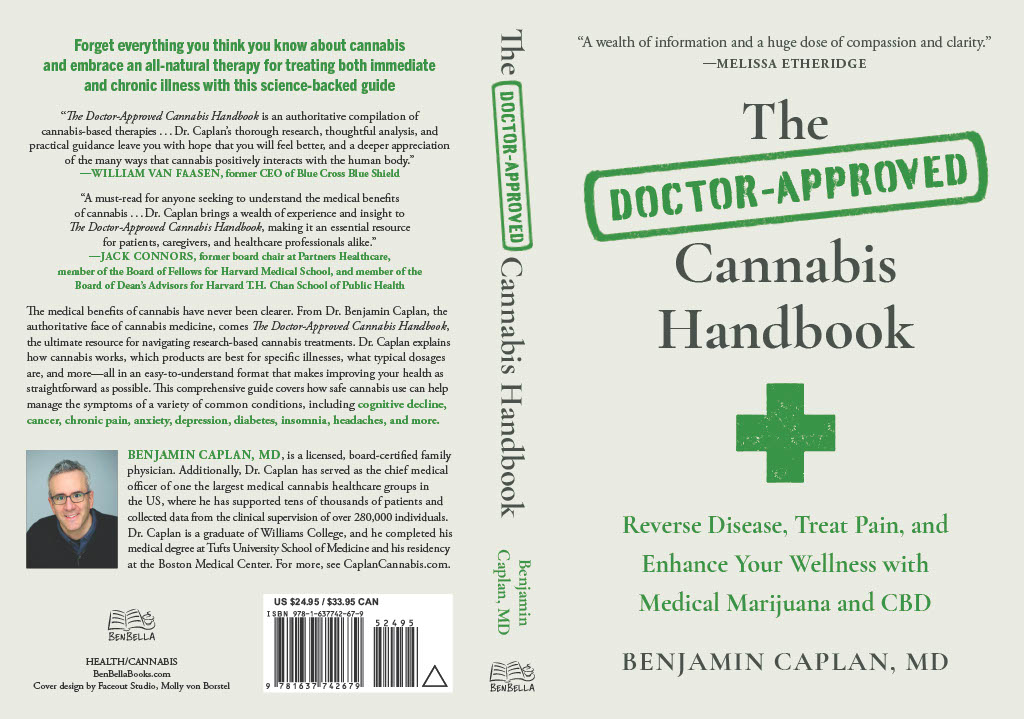
"A wealth of information and a huge dose of compassion and clarity."
Melissa Etheridge
Upcoming Events Calendar
No Events Found











